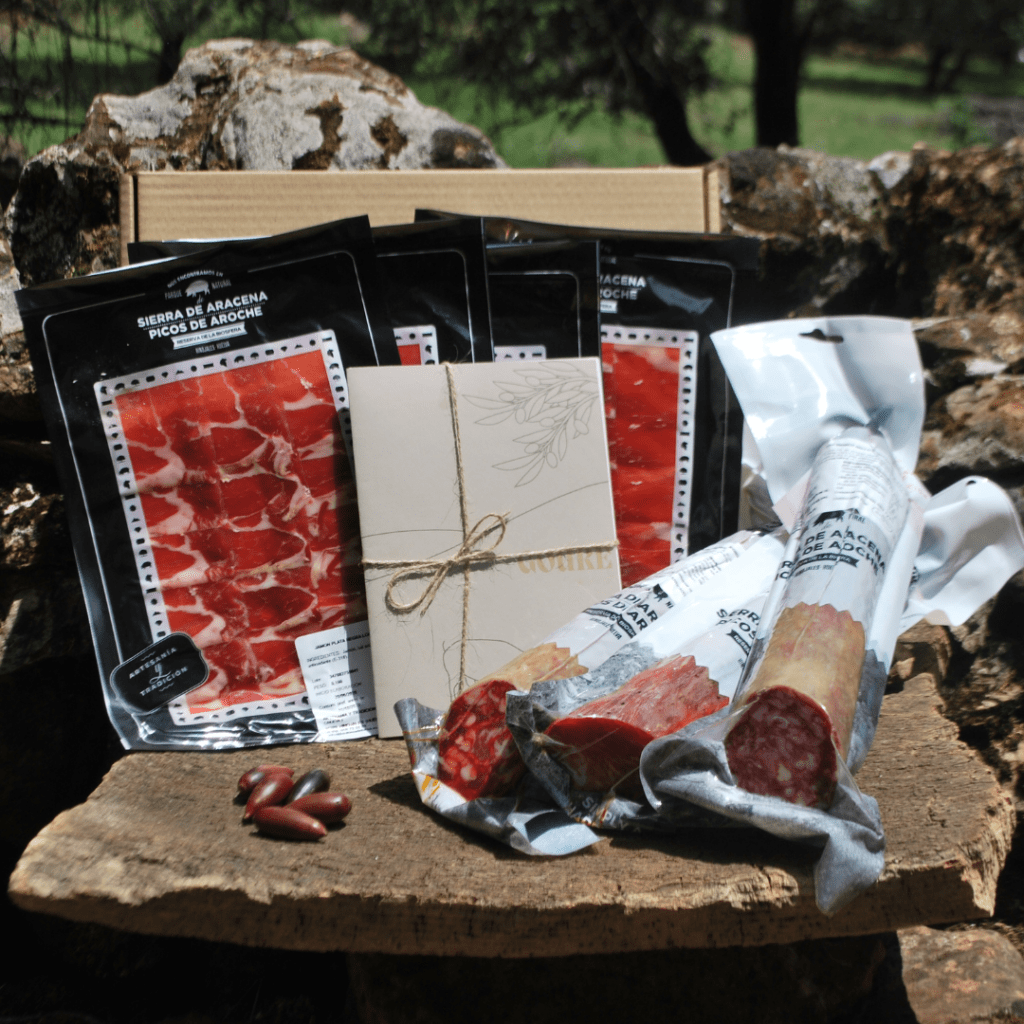Paleta Iberica
Paletilla ibérica is a Spanish term that refers to the front leg of an Iberian pig. Iberian pigs are a breed of pig native to the Iberian Peninsula, which includes the countries of Spain and Portugal. Paletilla ibérica is a delicacy in Spanish cuisine and is often used in dishes such as roasted pork and ham. It is prized for its flavor and tenderness, which is due in part to the fact that Iberian pigs are allowed to roam freely and feed on a diet that includes acorns. The paletilla ibérica can be prepared in various ways, such as grilling, roasting, or braising. It is often served with a variety of accompaniments, such as potatoes, vegetables, and sauces.
¿Qué te apetece?
FAQ: Paleta Iberica
where is paletilla iberica produced?
Paletilla ibérica, or Iberian pork shoulder, is produced in Spain and is made from the front leg of an Iberian pig, a breed of pig native to the Iberian Peninsula. The production of paletilla ibérica follows traditional methods and involves curing the meat with salt and air-drying it for several months to a year. The resulting pork shoulder is dense, deeply flavored, and rich in healthy monounsaturated fats.
Paletilla ibérica is produced in several regions of Spain, including Andalusia, Extremadura, and Castilla-La Mancha. The production of paletilla ibérica is regulated by the Denominación de Origen Protegida (DOP), or Protected Designation of Origin, which ensures that the pork shoulder is made according to traditional methods and meets certain quality standards.
Paletilla ibérica is a highly prized and sought-after delicacy in Spanish cuisine, and is enjoyed by many people around the world. It is often served thinly sliced as a tapa, or small snack, and is also used in a variety of dishes, such as omelets, sandwiches, and stews.
How is the paletilla iberica produced?
Paletilla ibérica, or Iberian pork shoulder, is produced in Spain from the front leg of an Iberian pig, a breed of pig native to the Iberian Peninsula. The production of paletilla ibérica involves several steps:
- Selection of the pork shoulder: The front leg of the Iberian pig is carefully selected for its size and quality.
- Curing: The pork shoulder is salted and left to cure for several weeks to several months, depending on the size and type of shoulder being produced. The salt helps to preserve the meat and also contributes to the flavor of the final product.
- Drying: After curing, the pork shoulder is hung to dry in a well-ventilated area for several months to a year. This allows the meat to lose moisture and develop its characteristic flavor and texture.
- Aging: After drying, the pork shoulder is aged for several months to a year. During this time, it develops its characteristic flavor and texture.
- Slicing and serving: The pork shoulder is sliced thin and served as a tapa, or small snack, or used in a variety of dishes, such as omelets, sandwiches, and stews.
Paletilla ibérica is known for its rich, flavorful taste and tender, succulent texture, and is considered one of the finest pork shoulders in the world. It is a highly prized and sought-after delicacy in Spanish cuisine and is enjoyed by many people around the world.
why it’s called paleta iberica “de bellota”?
Paleta ibérica de bellota is a type of cured pork shoulder produced in Spain from the front leg of Iberian pigs. It is called “de bellota” because the pigs are raised on a diet of acorns, or “bellotas” in Spanish, during the final months of their lives. This diet, along with the exercise and freedom to roam in the pasture, gives the paleta ibérica de bellota its unique flavor and texture.
Iberian pigs are a breed of pig native to the Iberian Peninsula that are known for their ability to produce high-quality cured pork products. They have a higher percentage of monounsaturated fat than other breeds of pigs, which gives the paleta ibérica de bellota its rich, flavorful taste and tender, succulent texture.
Paleta ibérica de bellota is considered one of the finest pork shoulders in the world and is a highly prized and sought-after delicacy in Spanish cuisine. It is enjoyed by many people around the world for its unique flavor and texture.
How long does it take to produce a paletilla iberica?
It takes several months to a year to produce a paletilla ibérica, or Iberian pork shoulder. The process involves several steps, including selection of the pork shoulder, curing, drying, and aging.
The length of time it takes to produce a paletilla ibérica depends on several factors, including the size and type of shoulder being produced, the climate and humidity of the region where the shoulder is produced, and the specific curing and aging methods used.
The production of paletilla ibérica is a slow and labor-intensive process that requires patience and attention to detail. The final product is a highly prized and sought-after delicacy in Spanish cuisine, known for its rich, flavorful taste and tender, succulent texture.



